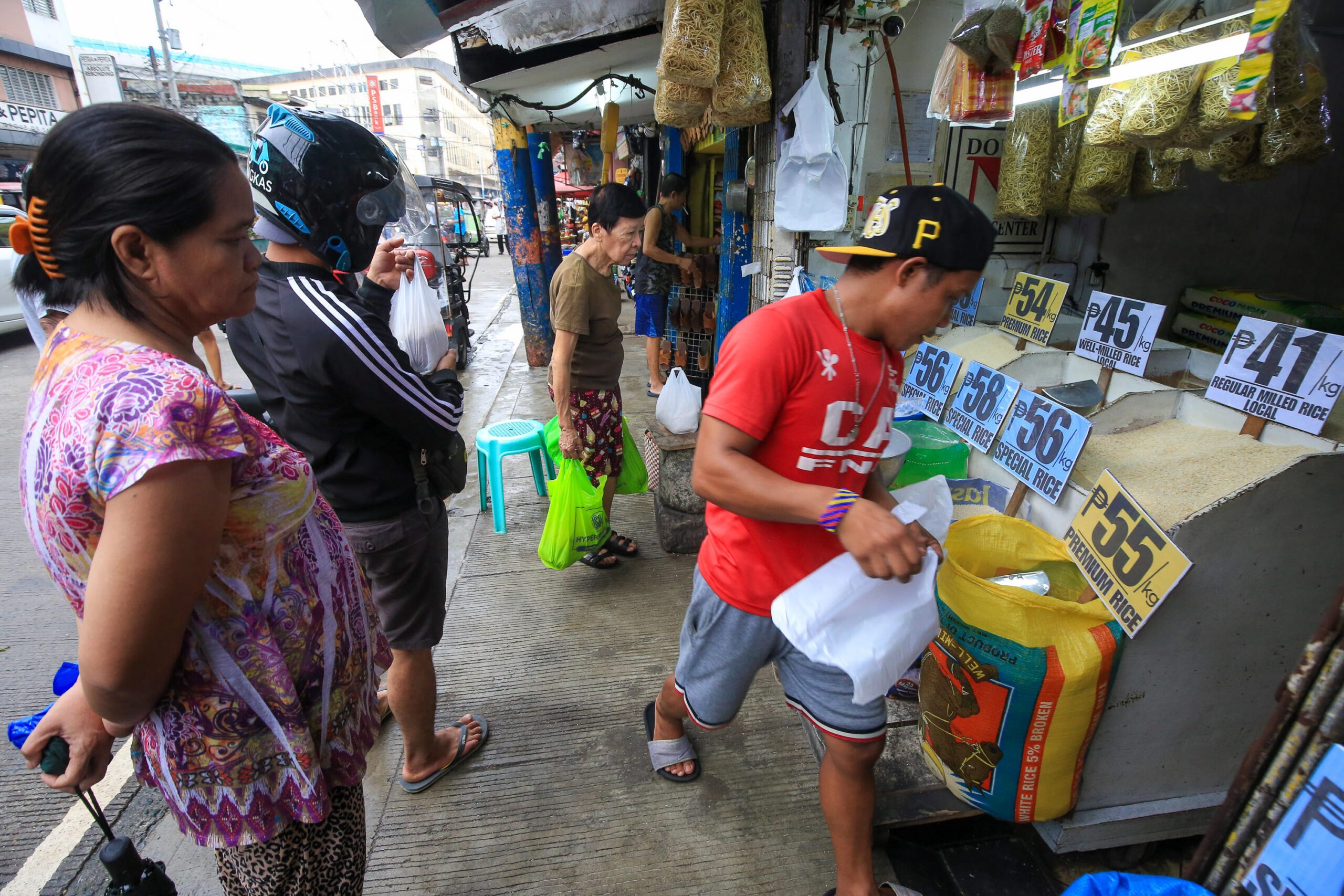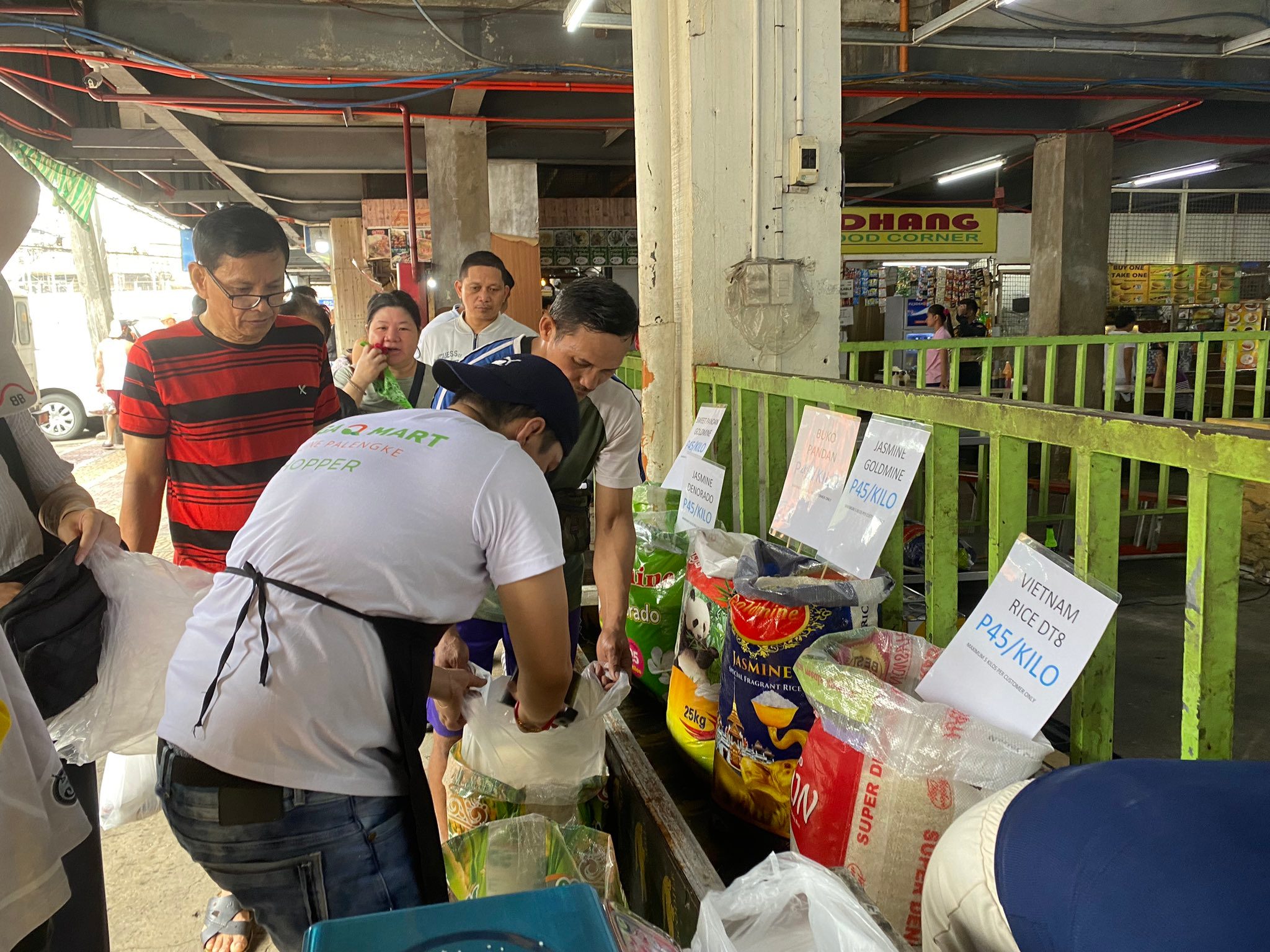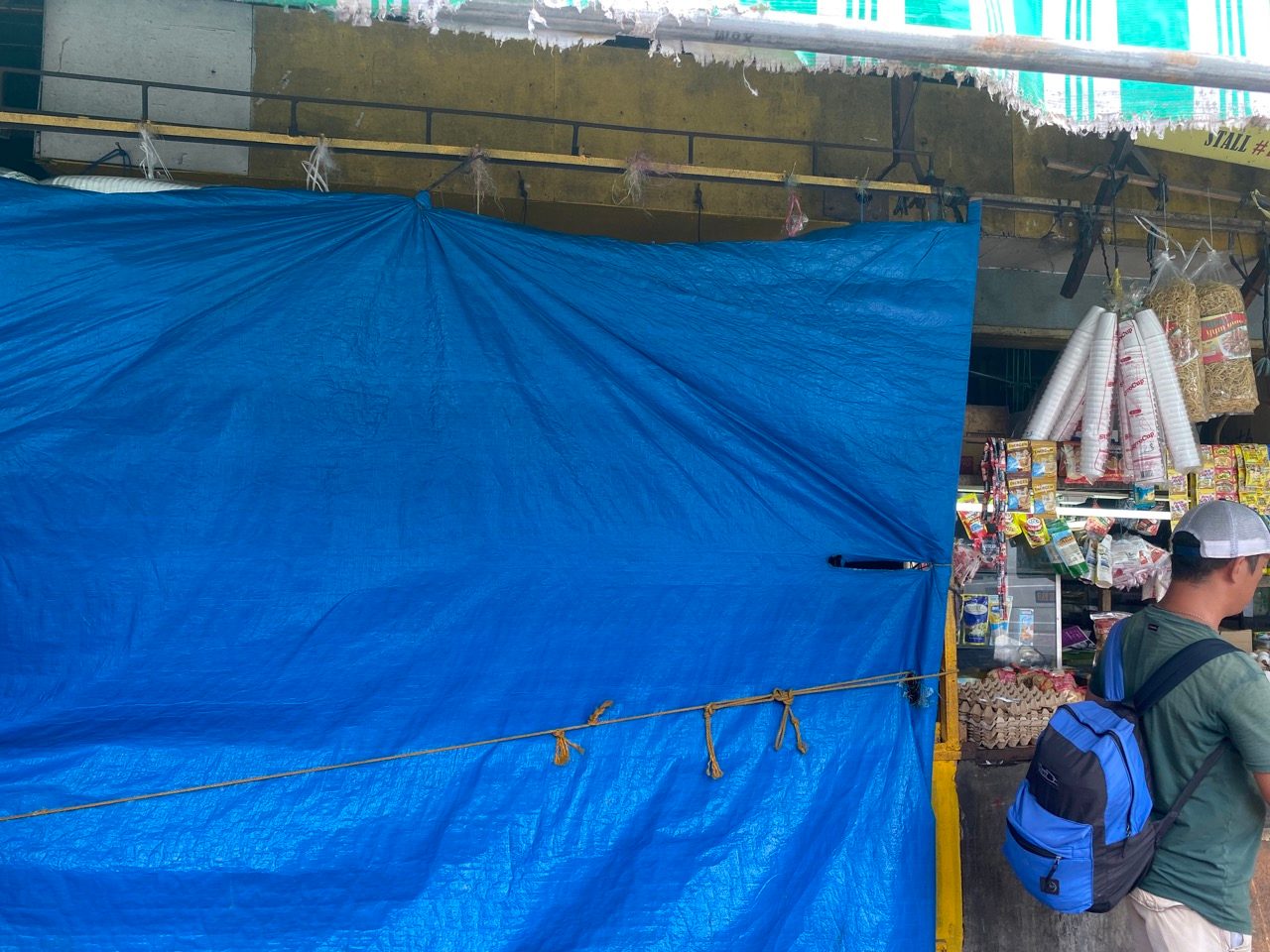SUMMARY
This is AI generated summarization, which may have errors. For context, always refer to the full article.

MANILA, Philippines – Consumers swarmed Mega Q Mart in Quezon City on the first day of the implementation of the price cap on rice on Tuesday, September 5.
Evelyn was among those who went to the Quezon City market to buy rice. She said that her budget for rice would usually get her only three kilos, but now she can buy five kilos because of the price cap.
“Mas gusto ko mas mababa kasi ang taas ng presyo ng bigas e. Minsan konti lang nabibili ko kasi walang budget. Ito makakabili pa ko ng five kilos,” Evelyn told Rappler. (I prefer it to be lower because the price of rice is high. Sometimes, I can only buy a small amount because I have a limited budget. With this, I can buy five kilos.)
In front of Evelyn was Mila, who also took advantage of the cheaper rice. She said it was a huge help for poor people like her.
“Nakatulong sa mga taong mahihirap lalo kasi ‘yung iba hindi na kayang bumili ng ganoong presyo,” she said. (It helps people who are poor, especially those who can no longer afford to buy at that price.)
Most of the stores in Mega Q Mart set the maximum rice purchase per consumer at five kilos due to the limited supply of cheap rice and the high demand.
President Ferdinand Marcos Jr., who is concurrent agriculture secretary, earlier issued Executive Order 39 setting the price ceiling of regular rice to P41 per kilo and P45 per kilo for well-milled rice, following the spike in the rice prices.

Rice retailers’ ‘sacrifice’
While consumers celebrated the cheaper rice, rice retailers reeled from the financial pain caused by Marcos’ order and hoped the government would soon release the promised subsidy.
At around 10:30 am, one of the stalls in Quezon City quickly sold out. Despite the volume of consumers, a rice dealer who asked not to be named said that they suffered losses due to the price cap and said she was not sure if they would still have rice to sell in the coming days.
Ronelda Macaganda, another rice retailer, said that she sold her P53 per kilo premium rice for P45 per kilo to comply with the price ceiling.
“Wala pa rin pong dumating from the government, from Bulacan, sa mga supplier, wala po silang mai-produce e. Kami na po talaga ang nagsakripisyo,” Macaganda said. (Nothing has arrived from the government or the suppliers in Bulacan. They couldn’t produce anything. We are the ones who have really sacrificed.)
DA officials, however, clarified that the price cap only applies to regular milled and well-milled rice. Other types of rice with different prices can still be sold and displayed.
In the midst of the crowd taking advantage of cheaper rice, some shops were noticeably closed. Vendors near the closed stores said that some chose not to open either because of the limited supply or they could not sell rice based on the price ceiling.

Unlike the bustling market in Quezon City, the Pasig City Public Market witnessed fewer rice consumers. Only a few stores in Pasig offered P41 or P45 per kilo of rice.
At least three rice vendors in the Pasig market told Rappler that they were still waiting for the suppliers to bring cheaper rice so they could sell it based on Marcos’ order.
Due to the limited supply, one of the stalls only sold one kilo of P45 rice per person.
Adhering to the price cap has forced vendors to reduce their profits. They now opt to add just P50 per sack, rather than the previous P150 markup, in order to stay within the P45 price limit.
“We usually impose a mark-up of P150 per sack of rice because we have to cover the costs for plastic bags, the salary of staff, electricity, and rent…. What will we do now?” the vendor asked DA officials during the inspection.
Inday, also not her real name, one of the rice vendors in Pasig City Market, expressed hope that the government will act swiftly on the its subsidy for affected vendors like them.
In a statement on Monday, Speaker Martin Romualdez said they would engage with leaders of rice retailers later this week to hear their concerns.
Romualdez said the government is looking at earmarking P2 billion to provide assistance to affected retailers.
In addition to the financial subsidy, Inday urged the government to provide them with affordable rice, to allow them to offer rice at prices within the established ceiling.
Economists have sounded the alarm over EO 39. The Foundation for Economic Freedom (FEF) said that EO 39 will “harm Filipino consumers and farmers” since it could reduce the supply of rice and encourage black market operations. – Rappler.com
Add a comment
How does this make you feel?









There are no comments yet. Add your comment to start the conversation.